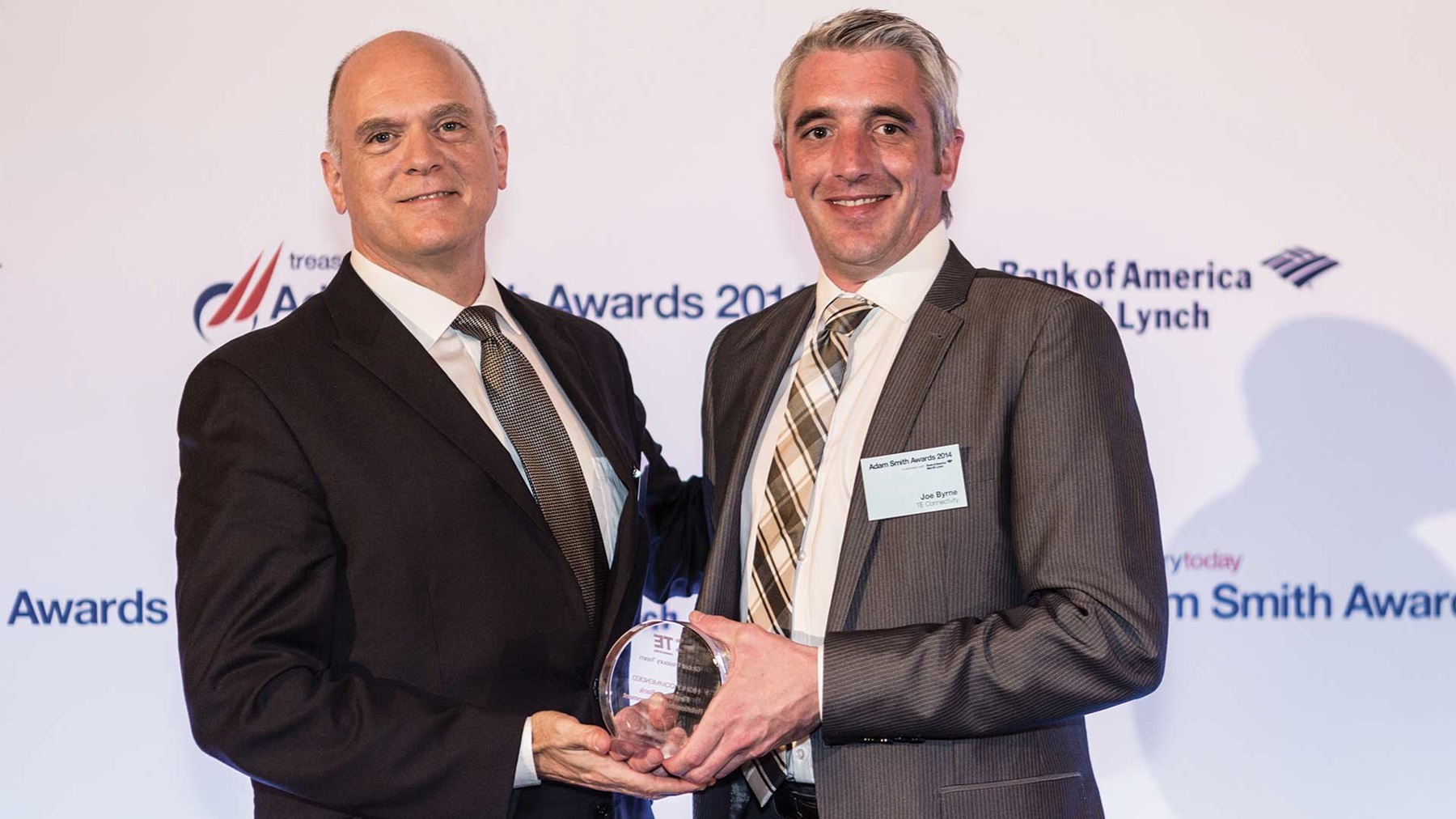
Photo of Donald Nash and Joe Byrne, TE Connectivity.
TE Connectivity created an RFP scorecard which identified the key elements sought by the treasury. It employed a cross-functional team involving HR, finance, IT and treasury to evaluate the responses using ratings, weightings and calculated rankings submitted by each team member.
Donald Nash
Regional Treasurer, Americas

TE Connectivity is a $14 billion global company that designs and manufactures highly engineered solutions which connect and protect data and power inside millions of products, from automotive, consumer, energy and industrial and broadband connectivity.
The challenge
Faced with the challenge of re-engineering its global cash management operations and banking structures, TE Connectivity’s treasury team called upon its longstanding banking relationships and sought to deploy highly efficient, automated, electronic solutions. Innovative approaches also needed to be taken to improve visibility and risk controls, given the complexity of local banking regulations.
“The challenge was to develop a ‘best-in-class’ request for proposal (RFP), allowing the process to serve as a scorecard for evaluating our existing and new banking partners around the world,” explains Donald Nash, Regional Treasurer, Americas.
To achieve this, TE Connectivity wanted to utilise the latest technologies to make its treasury operations as efficient as possible.
The solution
TE Connectivity created an RFP scorecard which identified the key elements sought by the treasury. It employed a cross-functional team involving HR, finance, IT and treasury to evaluate the responses using ratings, weightings and calculated rankings submitted by each team member.
The purpose of this scorecard was to replace subjective preferences in the evaluation process with a more objective approach. And by narrowing the scope of the process, banks were able to create more focused presentations discussing key process elements and showcase their best tools to support TE Connectivity’s drive for efficiency. The RFP scorecard has also enabled a quicker process for making final decisions.
Banking structures needed to include FX settlements, payroll, intercompany netting and support of the payments factory. Specific objectives of this intensive RFP process included:
- Optimal cash management structure – including accounts and services.
- Reducing bank fees and other costs associated with cash management activities.
- Strengthening controls.
- Improving service support on all fronts.
- Identifying additional investment options.
- Rapidly deploying a banking and information system to manage global liquidity; providing access to all funds daily.
- Reducing cash held for operational needs.
- Improving visibility into the consolidated cash position.
- Minimising or eliminating overdrafts and settlement value date errors; mitigating exposure to bank(s).
- Creating a fully-fledged in-house banking structure.
- Seamless interface with ERP systems.
- Being prepared for seamless integration of acquired entities.
- Achieving automation of accounting and reconciliation tasks.
- Identifying solutions to decrease non-cash working capital; minimising or eliminating low-value transactions to drive down costs.
- Producing consistently high customer satisfaction.
Best practice and innovation
Given TE Connectivity’s strength as a leader in technology, the treasury wanted to ensure it was utilising best-in-class technology and optimising efficiencies throughout the organisation. The small treasury staff developed an innovative and highly aggressive RFP process to improve its bank structures and relationships, and take full advantage of the latest cash management technology.
This “scorecard” process uses key attributes, and then weights them. Each cross-functional team member then evaluates the banks for each attribute. The results are then discussed, follow-up questions asked and subsequent answers are incorporated into the results, which are then used to decide the final rankings.
Key benefits
- In China, the treasury used its RFP process to reduce banking systems from five to two, and reduced the number of banks from five to two. As a result, the treasury was able to successfully centralise processes and automate payment approvals in the company’s ERP system via a host-to-host interface. The treasury gained greater control through standardised processes and an enhanced cash pooling structure with more bank accounts enabled greater efficiency. Overall cost savings of 70% were achieved.
- In Brazil, similar performance improvements were achieved, delivering overall cost savings of around 15%.
- Bank accounts were reduced by 12% in EMEA. While bank systems were reduced from four to two, moving from local systems to fully integrated global platforms. Here, the cost savings exceeded 75%.
- The entire process took place in record time and in addition to China, Brazil and EMEA, TE Connectivity executed its plan globally, with equal speed and success.